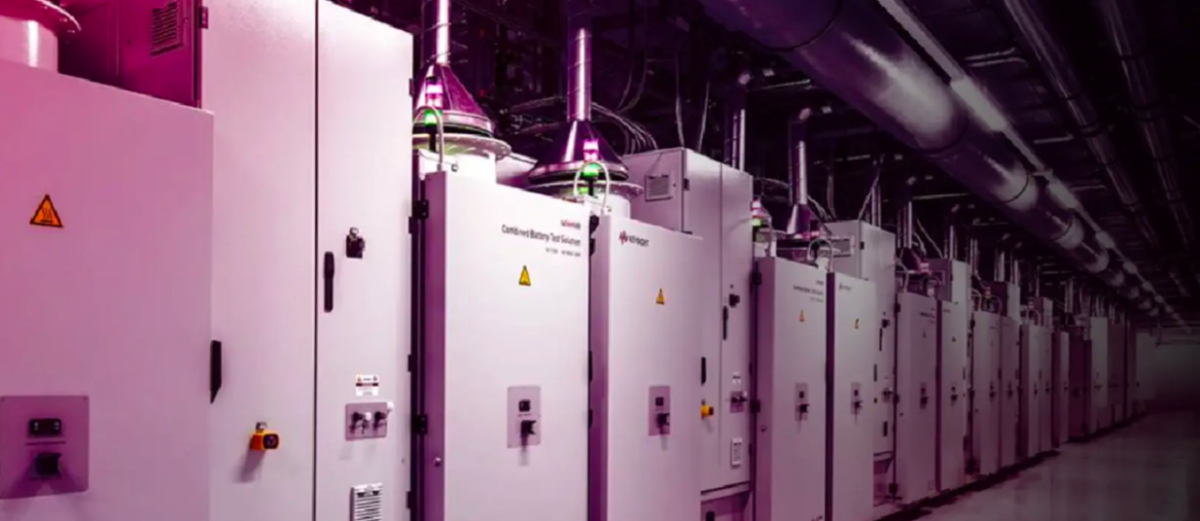Energy Storage Is Stabilizing Grid Modernization
By Matthew Borst, Contributor

Marathon runners understand that the human body provides energy from different forms throughout a race to be able to keep running. When energy reserves start to wane, the runners find hydration stations to fill back up and keep pace throughout the race. The energy grid also requires energy reserves to stabilize demand during peak times, and energy storage systems (ESS) provide that capability. Integrating ESS is critical to grid modernization as this shift is reshaping how the world generates, distributes, and consumes electricity.
Grid modernization is focused on transforming the current electrical energy infrastructure to meet the demands of the 21st century and beyond. This change of the grid and energy industry is complex and ongoing. Collaboration between utilities, technology companies, policymakers, and consumers is essential to overcome the challenges and seize the opportunities presented by grid modernization. Key to this transition will be the integration of multiple technologies into the energy grid, including energy storage.
History of energy storage in the power grid
Energy storage systems are most known for battery energy storage systems (BESS), but that is not where ESS started. Pumped hydroelectric storage started in the late 19th century in Europe and grew throughout the 20th century in regions with suitable water systems. The oil crises that spread throughout the late 20th century spurred research into alternative energy storage sources. Advances in battery technology transformed BESS from being primarily lead-acid to lithium-ion chemistries.
The integration of renewable energy sources like wind and solar has also driven the need for ESS. Utility-scale ESS has become increasingly common, playing a critical role in grid stabilization and enabling further renewable energy generation. Other storage technologies like flow batteries, thermal energy storage, and compressed air energy storage are also gaining traction. The history of energy storage is a journey from curiosity to necessity and will continue to play an indispensable role as the world transitions through grid modernization to a cleaner, more sustainable future.
Energy storage systems supporting grid modernization
Several energy storage systems are playing a pivotal role in enhancing the power grid's reliability, efficiency, and sustainability, including:
- Lithium-ion batteries: Lithium-ion battery technology has seen rapid growth due to its high energy density, fast charging capabilities, and declining costs. It is also a more versatile chemistry, suitable for applications from electric vehicles to grid-scale storage. Lithium-ion also plays a key role in renewables by quickly storing excess solar power and wind energy for later use.
- Pumped hydroelectric storage: Pumped hydroelectric storage is a mature technology that has proven reliability and long duration storage capabilities. It is ideal for large-scale energy shifting by balancing daily and seasonal energy fluctuations. Its only restriction is that it requires specific geographical conditions for implementation.
- Flow batteries: Flow batteries can store energy for extended durations, making them suitable for seasonal energy shifts. They also possess deep discharge capabilities without performance degradation. However, they remain an emerging technology still under development and gaining commercial visibility.
- Compressed Air Energy Storage (CAES): Similar to pumped hydroelectric storage, CAES can store energy for extended periods and requires specific geological formations for air compression. One key benefit of CAES is its ability to efficiently convert energy with minimal losses.
- Thermal energy storage: Thermal energy storage can retain energy for days or even months. It includes multiple forms, like molten salt, ice, and hot water storage. Thermal energy storage is compatible with solar thermal and geothermal energy, providing integration with renewable heat sources.
There are several other emerging technologies like solid-state batteries, hydrogen storage, and gravity-based storage that are being evaluated for implementation at scale. These technologies, whether individually and in combination, are modernizing the grid into a more stable and resilient system.
Benefits and challenges of energy storage for grid modernization
More advanced ESS is critical in transforming the traditional power grid into a smarter and energy-efficient network. Grid modernization brings numerous benefits to the system and users alike. Utility providers benefit as energy storage can improve grid efficiency by shifting power consumption to off-peak hours and optimizing the use of existing grid infrastructure—reducing overall strain on the current grid network. ESS is also critical to the integration of renewable energy sources by smoothing out the excess renewable energy during periods of high generation and releasing it during high demand or low generation. This can help defer the need for new power plants.
Users benefit as energy storage can provide backup power during outages, reducing the frequency and duration of blackouts. ESS can also help lower operating costs by optimizing the use of energy resources and reducing the need for expensive peak-load generation.
While energy storage offers significant benefits for grid modernization, some challenges remain for acceptance and implementation to grow. The initial investment in ESS can be significant, although costs are decreasing over time as development continues to advance. Some energy storage technologies have relatively short storage durations, which can limit their effectiveness in managing long-term energy stability. The mining, production, and disposal of batteries can have negative environmental impacts. Integrating ESS into the existing power grid requires careful planning and coordination to ensure system interoperability.
Addressing these challenges will be crucial for the successful deployment of energy storage systems and the modernization of the power grid. Successful implementation requires collaboration between utilities, technology providers, regulators, standards developers, and customers.
The Road Ahead
The transformation of the grid and energy industry is complex and ongoing. The full potential of energy storage systems for grid modernization can be realized by investing in infrastructure upgrades, developing innovative technologies, and increasing visibility of energy storage availability. This will ensure the world can create a more resilient, efficient, and sustainable energy grid for the future. Like a well-trained marathon runner, the power grid will have a stable supply of energy sources going forward.
In the next blog post of the grid modernization series, we will explore solar power. Bookmark this post and check back again next month for a link to the next blog post. Read all blog posts in this series on grid modernization and network communications.

